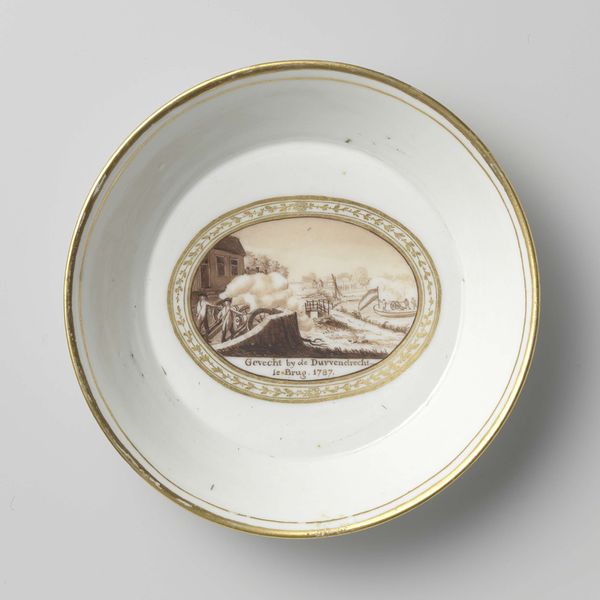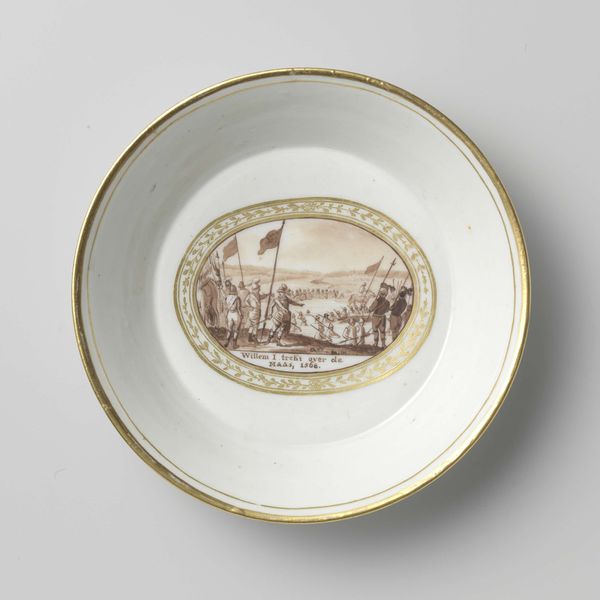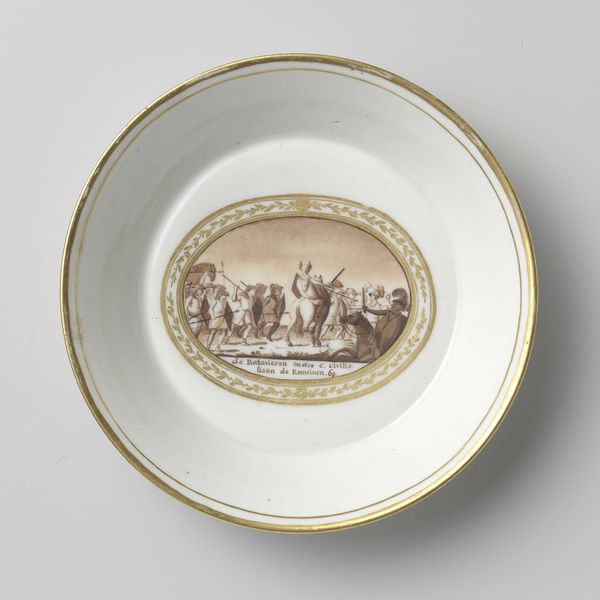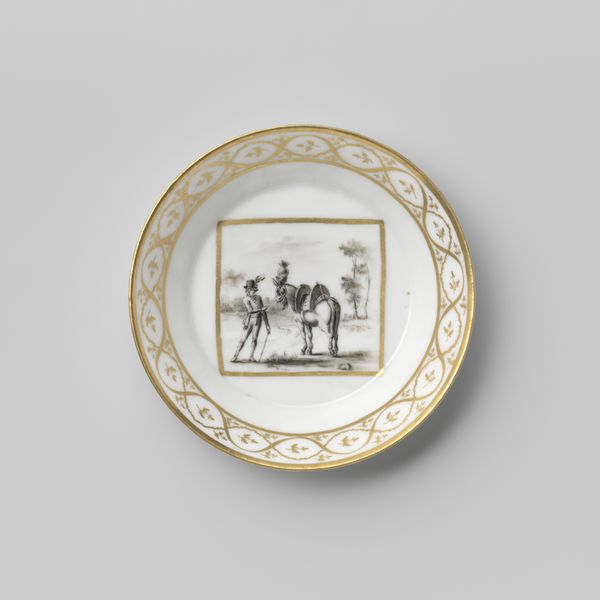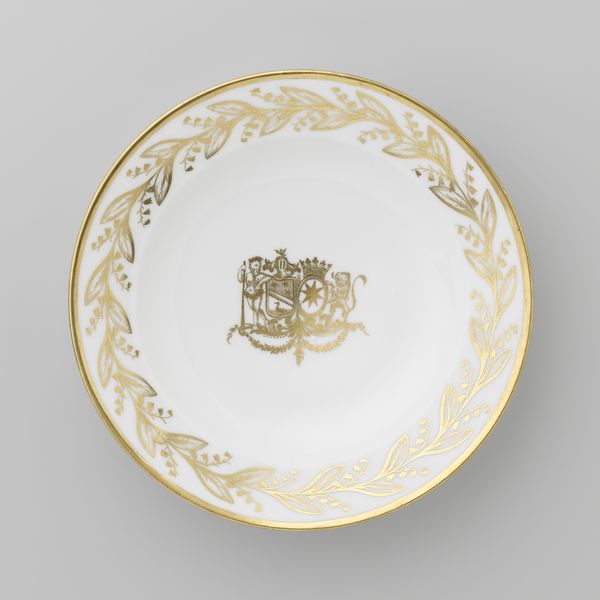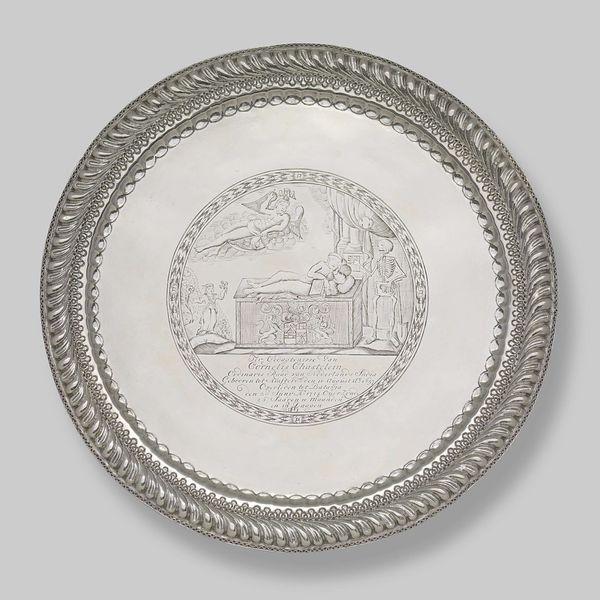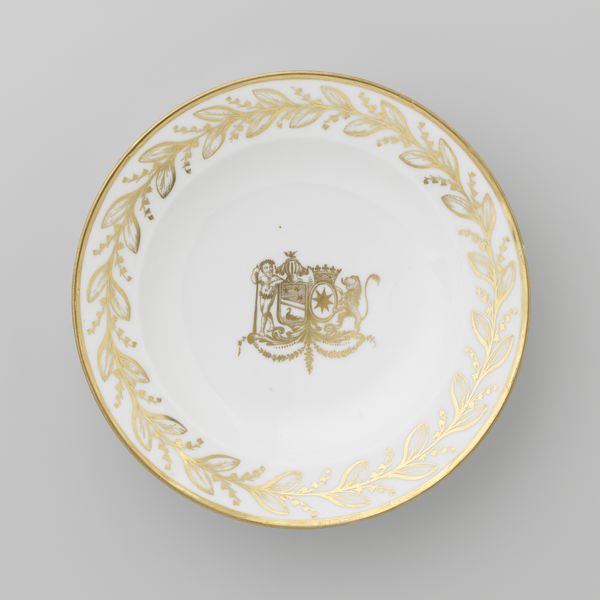
painting, ceramic
#
painting
#
ceramic
#
stoneware
#
genre-painting
#
history-painting
Dimensions: height 3 cm, diameter 12.7 cm, diameter 8.8 cm
Copyright: Rijks Museum: Open Domain
Curator: Immediately, there is a curious sense of diminishment looking at this scene of grand naval warfare, doesn’t it strike you? Editor: Yes, a rather unexpected juxtaposition of a momentous event depicted on such an everyday object. This is a saucer, made after 1794, and housed here at the Rijksmuseum. It shows an image of the Four Days’ Battle. Curator: Its very existence seems to propose interesting questions about commodification and commemoration, the reduction of a sprawling historical drama to something easily held and displayed in a domestic setting. Editor: Precisely! And crafted in ceramic, this saucer speaks volumes about material culture and how history gets mediated through decorative objects. Think of the labour involved, not only in the depiction of the naval battle, but in shaping and firing the clay, applying the glaze, and finally gilding the rim. The process contains all of its social context. Curator: The composition is noteworthy. The central oval vignette confines the chaos of naval combat within a tightly framed space. The contrast between the porcelain white ground and the sepia tones of the battle underscores the visual dynamic, further enhancing its allegorical qualities. Editor: The question is, what are those allegorical qualities pointing toward? This wasn’t created in a vacuum. It’s a functional piece meant to be used and, perhaps, spark conversation. Consider the consumption habits surrounding such a piece, its intended market. Were these scenes designed to inspire patriotic pride, or simply serve as an exotic tableau? Curator: That question certainly introduces another layer to our formal engagement with the saucer. But its power lies nonetheless in that formal articulation. Editor: Absolutely. And, ultimately, through analyzing the material history, it challenges preconceived notions of taste, labor, and art’s role in the home. Curator: I leave contemplating how the artist condensed such violent power onto such a docile object. Editor: Indeed. Thinking about the hands that made this piece, and whose stories, typically ignored, we might now remember.
Comments
No comments
Be the first to comment and join the conversation on the ultimate creative platform.
